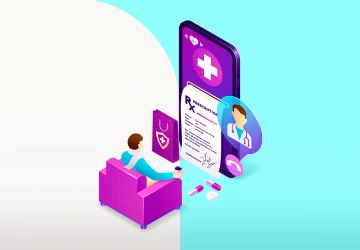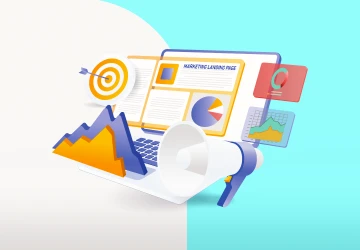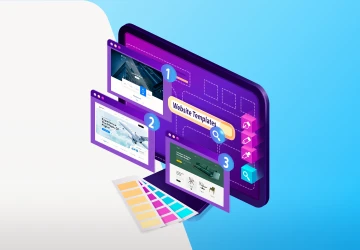Best Engineering Website Features for Client Attraction

In today’s digital world, engineering firms need to show off what they do best—and that starts with having the best engineering website features.
Think eye-catching project portfolios and easy-to-use client engagement tools that make you stand out.
But no worries—you don’t need to be a tech pro to make it work.
With a few smart choices, your website can go from just “being there” to actively helping you win clients, build trust, and grow your business.
In this guide, we’ll break down the must-have features your engineering site needs to truly shine online.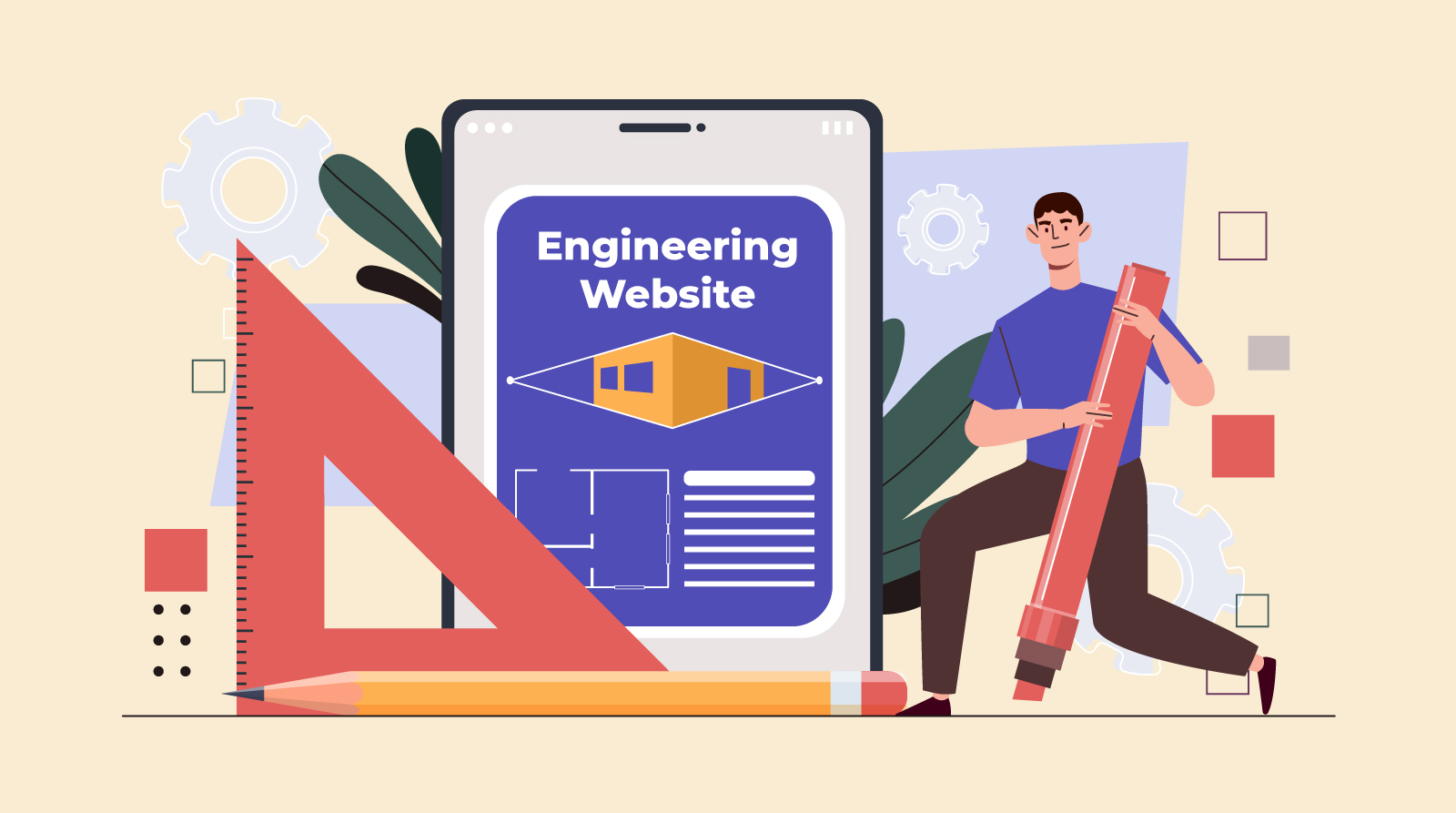
What Is the Importance of a Good Engineering Website Design?
In digital marketing, a well-designed website is essential for engineering firms.
It’s often the first impression potential clients have of your company, which makes your website design a crucial part of your business.
A clean, professional design helps establish trust and credibility, especially in the competitive engineering sector.
Your website design is usually the first thing visitors see, and it plays a huge role in shaping their perception of your business.
Research shows that website design influences decisions quickly—about 40% of users will leave a site if it takes more than three seconds to load.
And it only takes 50 milliseconds for visitors to decide whether to stay or leave based purely on how your site looks and feels.
So, what makes a good engineering website?
Here are some key features:
Set yourself apart from competitors with the best engineering website features.
Showcase your work through project portfolios.
Make it easy for visitors to find and submit their contact information.
Display your business’s contact details.
Keep visitors engaged with a regularly updated blog.
Ensure your website works perfectly on mobile devices.
And let’s not forget about Google.
The search engine loves websites that are well-designed and mobile-friendly.
If your site has poor design, a confusing layout, or isn’t optimized for mobile, it will rank lower than your competitors with responsive, easy-to-navigate sites.
38% of people will stop engaging with a website if its content or layout isn’t attractive, which is why having a clear, mobile-friendly design is key.
What Are the Core Features of Effective Engineering Websites?
a. Design & Usability
1. Responsive Design
As of 2024, nearly half of all internet traffic in North America comes from mobile devices.
This makes having a responsive design super important for engineering websites.
What does that mean?
It means your website will automatically adjust to fit whatever screen it’s being viewed on—whether it's a desktop, tablet, or smartphone.
This helps ensure your site looks good and works well, no matter what device someone is using, which is key to reaching a bigger audience.
Think about it—people are using smartphones more than ever to browse the web.
If they have to zoom in and out to read your content or navigate your site, it can get frustrating.
And when your site isn’t optimized for mobile, visitors might just bounce away before ever exploring your services.
This could mean missed opportunities and lost leads.
The good news?
Most website-building platforms today let you preview how your site will look on mobile devices before it goes live.
This makes it much easier to check that everything is working well on all screens.
And there’s another big reason why responsive design matters: SEO.
Websites that are mobile-friendly tend to rank better in search results, which means more visibility and more traffic to your site.
2. User-Friendly Navigation
No one can bear a confusing website—especially when all they want is to find the right solution fast.
In the world of engineering websites, smooth and simple navigation isn’t just a nice touch—it’s everything.
Imagine landing on a site packed with promising services, but you can’t even figure out where to start.
That’s the kind of frustration that sends potential clients running in the opposite direction.
A common mistake engineering websites make is cramming every bit of technical jargon and detail onto the homepage, hoping to impress.
But here's the thing: not everyone visiting your site speaks that language.
Many are just looking for the right team to solve a problem.
So, instead of overwhelming them, the best approach is to guide them clearly and confidently.
That’s where user-friendly navigation steps in.
With clean labels, a well-organized menu, and no more than a few clicks to reach key information, your site becomes a helpful guide, not a maze.
Studies show that users spend just over six seconds scanning a site’s navigation.
That’s barely enough time to take a sip of coffee.
So if they can’t figure it out at that moment, chances are they won’t stick around.
But when navigation feels effortless?
That’s when visitors relax, explore more, and connect with your brand.
Want to take it even further?
Add smart client engagement tools like live chat.
It’s like having a helpful assistant ready to jump in with answers the moment someone’s lost or curious.
Especially on content-heavy sites, that kind of support can turn a quick visit into a solid lead.
3. Consistent Branding
Say you’re walking into a room and see someone wearing mismatched clothes—nothing flows, and nothing feels cohesive.
Your first impression?
Probably not the best, right?
Now, think of your website as that room and your branding as the outfit.
Consistency in branding across your engineering website is the difference between looking polished and professional or you haven’t quite figured things out yet.
In the world of engineering websites, brand consistency isn’t just about looking good—it’s about creating an experience that feels familiar and reliable.
When your logo, color scheme, and typography are used consistently across your site, it’s like telling your visitors, "We know who we are, and you can count on us."
That sense of reliability isn’t just comforting—it’s magnetic.
There’s some serious power in brand consistency.
Marq’s State of Brand Consistency report revealed that businesses with a unified brand across all platforms see a revenue boost of 10% to 20%.
That’s not just impressive—it’s essential.
Consistency builds recognition, and recognition breeds trust.
The more your audience sees the same cohesive elements—whether your logo, colors, or style—the more they associate those elements with quality and dependability.
When your engineering brand shows up consistently, you’re not just standing out—you’re setting yourself apart from the competition.
You're creating an emotional connection with your audience, showing them that you are the company they can rely on, the one that truly understands their needs.
This isn’t just about making a sale; it’s about building a relationship.
So, why is consistent branding so critical?
Because it establishes authority and credibility.
The more your visitors see your brand in action—across pages, colors, and fonts—the more they begin to trust you.
And trust?
That’s the foundation of long-term loyalty.
b. Content Strategy
4. Comprehensive Project Showcase
People need to see something convince them, and nothing does that better than a hands-on project showcase.
In the realm of engineering websites, this is where you let your work speak for itself.
Imagine taking your visitors on a relaxed tour through a digital gallery filled with your proudest projects.
Every project is like a page from your very own story of creativity, skill, and hard-won success.
Think of your website as a friendly stage where real-life examples—case studies, clear pictures, and engaging videos—come together to share the journey behind your work.
From that first spark of an idea to overcoming obstacles and finally revealing a polished final product, your projects show exactly how you make things happen.
It's not just about listing your accomplishments; it's about painting a real picture that makes people trust what you can do.
5. Resource Library/Technical Documentation
Nothing builds credibility quite like knowledge.
That’s why having a solid resource library on your website is such a powerful tool.
It’s like the brain of your site—a go-to place filled with helpful knowledge, smart ideas, and real value that keeps engineers, clients, and even casual visitors coming back.
This library isn’t just about stacking PDFs or throwing in a few whitepapers.
It’s about carefully putting together useful stuff—like technical articles, research, and guides—that show off your expertise and help others learn.
It's your way of saying, “We’re not just another engineering company—we know what we’re doing, and here’s proof.”
But here’s the thing—it has to be easy to explore.
No one wants to dig through clutter.
That’s where good organization comes in.
Use clear categories, a simple search bar, and filters so people can quickly find exactly what they need.
And if you really want to boost engagement, mix in some client engagement tools—like downloadable resources, how-to guides, or email sign-ups for updates.
6. Blog/News Section
You want your audience to feel like they’re not just skimming through your website but walking away with something valuable.
That’s where a well-organized blog or news section comes in as one of the best engineering website features.
In the engineering world, where trust and expertise are key, your content is more than just text—it's an opportunity to connect, educate, and build trust with your visitors.
And it’s not just about showing what you know; it’s about addressing the questions and needs your visitors have.
Keeping a steady flow of fresh, useful content does more than help you engage readers—it’s great for your SEO, too.
Search engines love new content, and a regularly updated blog can help boost your site’s ranking, making it easier for potential clients to find you.
And when you pair your blog with client engagement tools like a newsletter or subscription options, your blog becomes more than just a place to read.
It becomes a space where people want to keep coming back for more.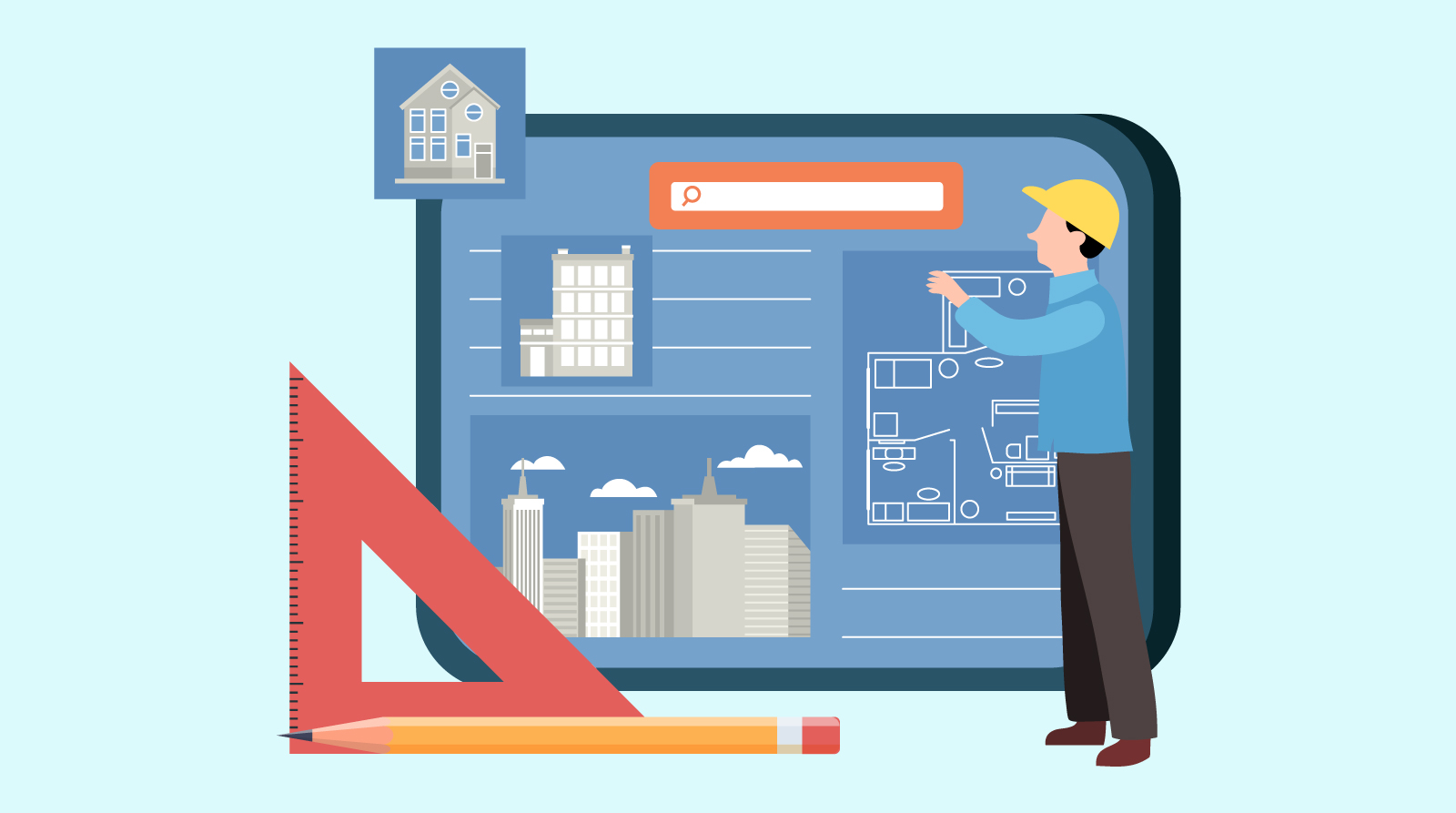
c. Technical & Functional Features
7. Interactive Tools/Calculators
I know it might sound a bit odd at first, but adding interactive tools and calculators can take your engineering website to the next level.
For example, imagine having a built-in engineering calculator that lets visitors instantly calculate load-bearing capacity or material strength right from your site.
Instead of just reading about these concepts, engineers and clients can engage with the content and see results in real time.
You could also offer unit converters, simulation software, or design prototype tools, allowing users to test ideas and perform necessary calculations without leaving the page.
This practical approach makes your website more than just an informational space—it becomes a valuable resource that users return to for answers.
8. Security & Compliance
Without proper security, your engineering website could easily become a target for cyber threats, which puts both your company and your clients at serious risk.
That's why having an SSL certificate is a must.
It not only keeps the data exchanged on your site safe by encrypting it but also gives visitors confidence that their information is secure.
An SSL certificate is like a trust signal—it’s essential for any website that handles sensitive data, especially in the engineering world.
You’ll also want to make sure your entire site uses HTTPS.
This adds an extra layer of protection to your connections and ensures that any information shared remains secure.
Engineering websites often store important documents, project data, and other valuable resources, so safeguarding this content is crucial.
It’s also important to stay on top of any legal requirements or industry regulations.
Depending on your field, there could be specific rules about how data should be handled.
One practical step could be setting up password-protected areas for sensitive client information, ensuring that only authorized users can access it.
9. SEO Optimization
SEO, or Search Engine Optimization, is the magic behind getting your engineering website noticed online.
When search engines like Google can easily understand what your site is all about, it’s more likely to pop up in relevant search results.
So, if you design your site with SEO in mind, you’ll make it easier for people to find you.
A good place to start is by using the right keywords across your site.
Make sure to add meta tags and alt text for images—this helps search engines figure out what your content is about.
Speed matters, too!
A fast-loading site keeps visitors happy, and search engines like Google tend to favor sites that load quickly.
Plus, having a sitemap helps search engines crawl your site more efficiently, ensuring all your pages get noticed.
Another important factor is keeping your content fresh.
When you update your site regularly, it shows visitors that you’re active and signals to search engines that your content is current and valuable.
Also, don't forget about internal links.
A good linking structure helps search engines understand how your pages are connected, making it easier for them to index your site properly.
d. Conversion & Engagement
10. Clear Service Descriptions
Try to put yourself in the client’s shoes.
They land on your site, hoping to quickly figure out if you can help them—but if your services are buried in vague wording or technical talk, chances are they’ll bounce.
That’s why one of the best engineering website features is having clear service descriptions that are easy to understand and straight to the point.
Instead of listing services in a long, confusing paragraph, break each one down.
Show what you do, how you do it, and—most importantly—why it matters.
Say you offer structural engineering.
Don’t just name it—explain how your work keeps buildings safe, cost-effective, and up to code. When clients see the real-world benefits, it clicks.
This kind of clarity makes all the difference.
It helps visitors understand how your services match their needs, which builds trust right away.
And when people trust you, they’re far more likely to reach out, start a conversation, or even kick off a project.
11. Prominent Contact Information
It doesn’t really add up—you spend all this time creating a great engineering website, but then your contact info is nowhere to be found.
Why make it hard for people to reach out?
Think about it: if someone’s impressed with your work and wants to talk, they shouldn’t have to dig around your site like they’re solving a puzzle just to find a phone number or email.
If it’s not clear where to go, they’ll probably just leave—and that’s a missed opportunity you didn’t have to lose.
So, make it easy.
Place your contact details where people expect them—right at the top of the page, down in the footer, or on a clearly marked “Contact” page. And don’t stop there.
Add links to your social media too.
Whether it’s LinkedIn, X (Twitter), or even YouTube, some people feel more comfortable reaching out through the platforms they already use.
12. Call-to-Action (CTA) Buttons
You’d be surprised—studies show that about 70% of small business B2B websites don’t include a call-to-action (CTA).
That’s a huge missed opportunity, especially when CTAs are one of the best engineering website features for turning visitors into leads.
A CTA is a simple prompt that tells visitors what to do next.
Without clear CTAs, people might love your content but end up leaving without taking any further action. And that means lost chances for your business.
For engineering websites, where you're not usually selling products directly, a solid CTA can spark a conversation.
Whether it’s a button inviting visitors to "Get a free quote", "Schedule a consultation", or "Download our portfolio", these prompts gently guide them toward taking the next step.
But it’s not just about slapping a CTA somewhere on your page.
The trick is to think about your audience—their challenges, needs, and how your services solve their problems.
Once you understand that, you can place your CTAs in spots where they matter most, like right after explaining a service or sharing a success story.
Don’t forget about the power of forms, either.
A simple form can let visitors sign up for updates, request a free consultation, or even just ask for more information.
This keeps the conversation going and turns casual visitors into valuable leads.
13. Career/Job Portal
A great engineering website does more than just show off your work—it helps grow the industry itself.
One way to do that?
Include a Career or Job Portal.
It might not seem like a big deal at first, but it’s actually one of the best engineering website features you can offer.
Why?
Because a lot of people visiting your site aren’t just potential clients—they’re also aspiring engineers looking for their next big opportunity.
By adding a dedicated section for job openings, internships, or even mentorship programs, you’re creating a space where talent and opportunity can meet.
It’s a win-win.
Young engineers get access to real career paths, and your company attracts fresh talent that’s already interested in your work.
You can also use this space to share recruitment info, explain your company culture, and outline the kind of projects applicants might work on.
And it’s not just about hiring.
It’s about building community.
Your site becomes more than just a portfolio—it becomes a hub for innovation, collaboration, and professional growth.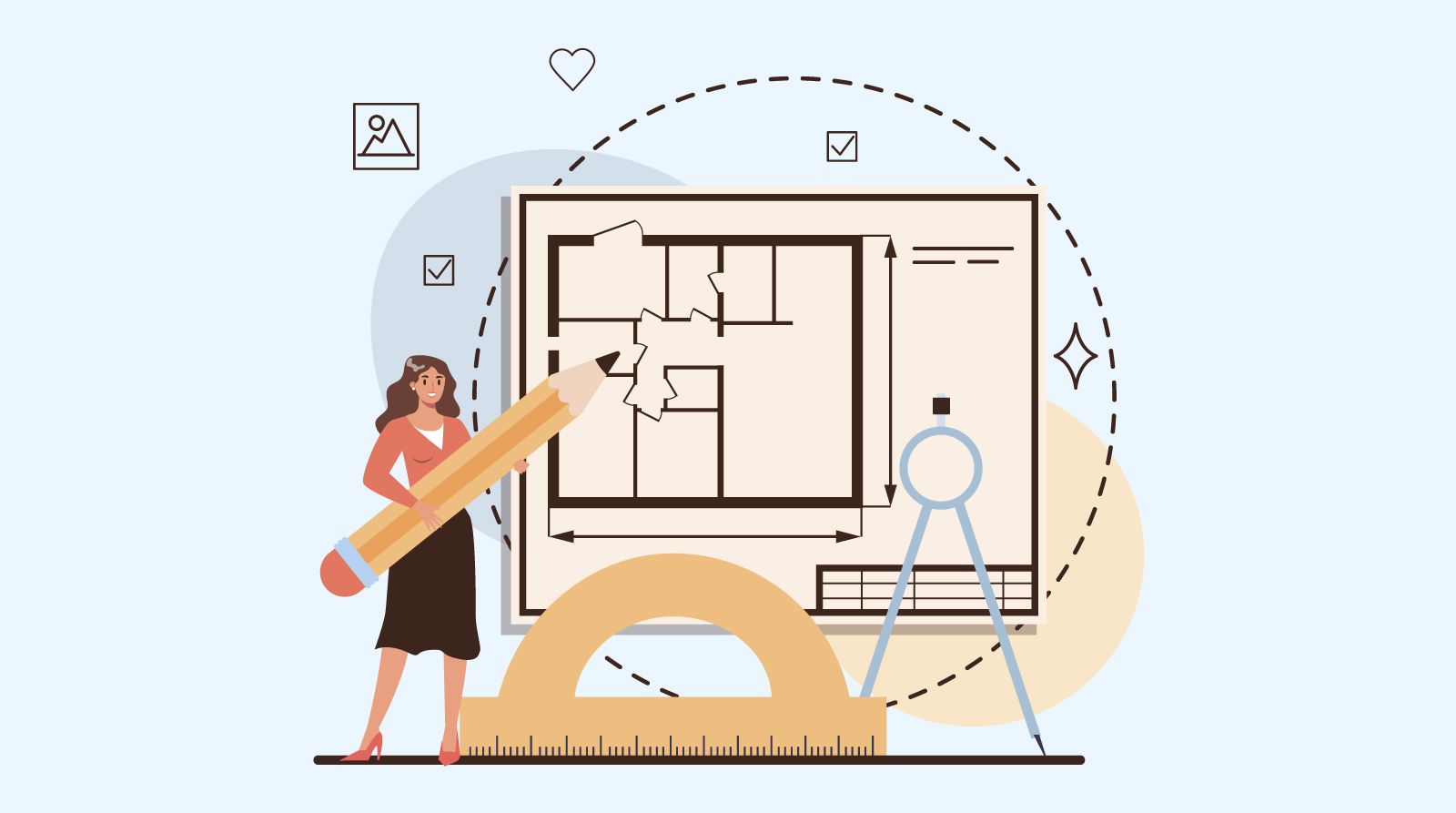
e. Additional Best Practices
14. Target Audience Focus
Your audience need to feel somehow that your website was made just for them.
For example, if you're targeting construction firms looking for structural engineering support, your homepage could highlight real-world projects you've completed in that space.
Your messaging might include phrases like “We help contractors build safer, smarter, and faster.” That speaks directly to their goals.
Or if your ideal client is a tech startup needing product design, your site could showcase prototyping services, CAD expertise, and success stories from similar clients.
Maybe even include language like “Turning your product idea into a market-ready reality.”
By aligning your content, tone, and visuals with the audience’s needs and challenges, you show that you get them.
That connection builds trust fast.
15. Regular Updates
Regular updates are key to keeping your engineering website fresh and interesting.
One of the easiest ways to do this is with blog posts.
Not only do they give your visitors something valuable to read, but they also help improve your SEO.
Search engines love fresh content, so by posting regularly, you're giving your site a better chance of ranking higher.
But it’s not just about SEO.
Blogs are a great way to connect directly with your audience.
You can share useful tips, industry news, or case studies that showcase your expertise.
This helps build trust with your readers, making them more likely to turn to you for solutions.
Blogs also give your website a chance to show off its personality.
How you write, the topics you cover, and the tone you use can help set you apart from other engineering firms.
You want your visitors to feel like they’re connecting with a brand that’s unique and relatable—not just a faceless business.
16. Analytics Integration
Analytics integration is like having a handy dashboard that shows you what's happening on your website in real time.
With tools like Google Analytics, you can see where your visitors are coming from, which pages they enjoy the most, and how long they stick around.
It’s basically your go-to guide for understanding what parts of your site are hitting the mark—and which areas might need a little extra tweaking.
In plain terms, analytics tells you how people are using your website.
For instance, you can check if your call-to-action buttons are getting clicked, if your project portfolios and blogs are really engaging visitors, and if your client engagement tools are making an impact.
With all that information, you can fine-tune your content and design to better meet your audience's needs.
FAQs
What Are the Features of Engineering Design?
Engineering design includes problem-solving, creativity, testing, and iteration to create functional, efficient solutions.
What Are the Key Features of a Good Website?
A good website is user-friendly, mobile-responsive, fast, secure, and has clear content with strong calls to action.
Which Is the Best Site for Engineering?
There’s no single “best,” but sites like Engineering.com, GrabCAD, and ASME.org are top picks for resources and community.
What Engineer Makes Websites?
Web developers or software engineers build websites, especially front-end or full-stack engineers with design and coding skills.
Final Thoughts
As promised, we’ve covered all the best engineering website features—from showcasing impressive project portfolios to integrating smart client engagement tools.
But here’s one final tip: Treat your website like a living part of your business, not a one-and-done project. Keep it updated, test what’s working, and always design with your ideal client in mind.
A well-built engineering website doesn’t just inform—it converts, connects, and builds long-term trust.
Need help bringing your website to life?
Reach out to us today, and let’s create something that truly reflects your expertise and drives real results.

